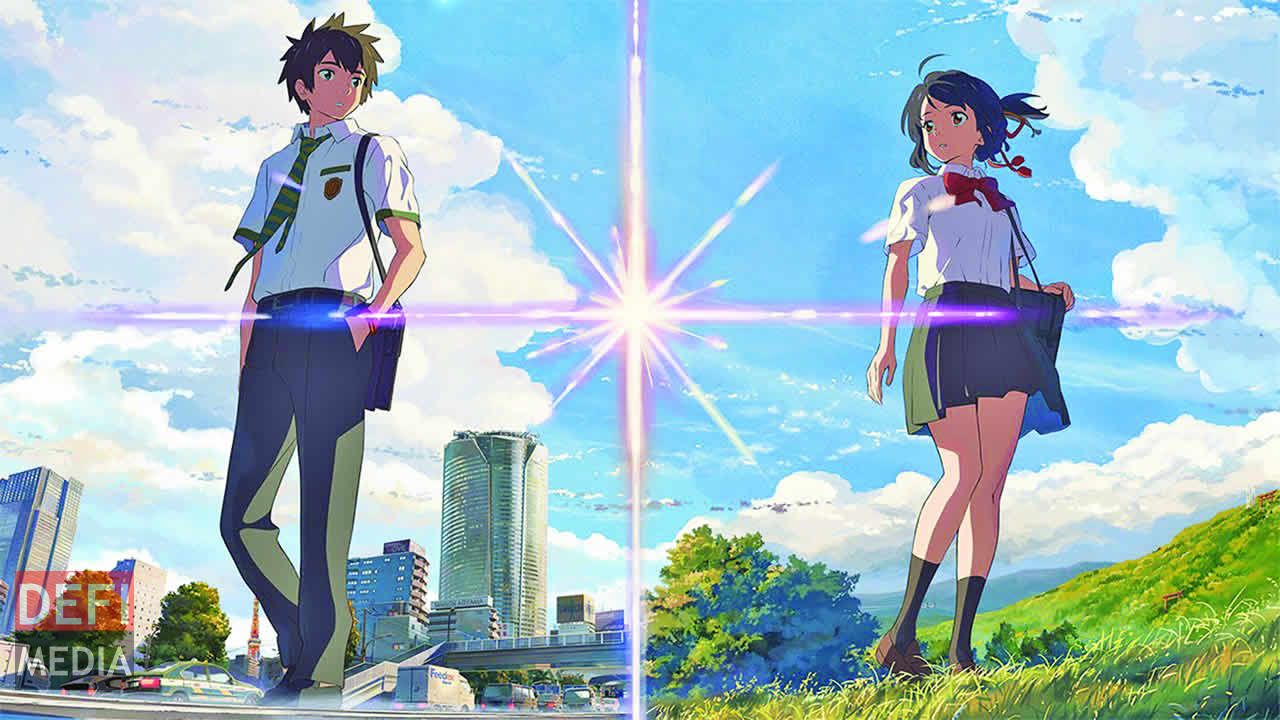
Since I have spent quite some time talking about how great anime is, I figured that it would be nice to provide a proper review of one of the most successful anime movies in history. Hold on, guys, we’re in for a ride.
Publicité
The first movie I watched from Makoto Shinkai was “Children Who Chase Lost Voices” which ironically was his latest film at that time. My first impression of him was that of a director who struggled to construct a proper narrative, with his art style, taking the upper hand over the story and his awful sense of pacing. Nevertheless, I thought that he had the potential to be a decent director or at least, someone whose Art Direction I could appreciate. I realised that his previous movie “5 Centimetres Per Second” and the next one, “Garden of Words” were all simple romantic stories with a penchant for the attitude of style over substance. It was undeniable that Shinkai was a masterful Art Director and Colour Designer. His cinematography is irreproachable even if the lack of a strong story causes the art to lose some of its effect. But even for someone like me, who has been extremely vociferous about my dislike of the Shinkai-Miyazaki comparison and of any sort of praise directed at Shinkai as being a decent director, there is no denying that “Kimi No Na Wa” is a brilliant movie. It is a great movie.
“Kimi No Na Wa” tells the story of a girl named Mitsuha and a boy named Taki who swap body over a period of time and learn to cope with the situation and about themselves throughout this adventure. Saying anything more would be treading into spoiler territory as the movie uses this simple, even “cliché” premise and turns it into an instant classic. Let’s take a look at what makes “Kimi No Na Wa” a great movie.
It uses classics. I’ve said this before, people need to know the difference between a cliché and a classic. It’s all about the execution and the effect it has on the audience. In this day and age, it is hard to come up with something absolutely original but what can be done is to use a classic cinematic trope in an original fashion and that is exactly what Shinkai does with this movie. He introduces the element of Body Swapping in the first act of the movie and it serves as a very entertaining introduction as well as the basis of development but the story does not entirely rely on that one element. It uses it and it elevates it to another level by adding layers of other themes and cinematic elements. Certain people might think this is a confusing movie, some might have watched it and loved it but not realise how actually well written it is. This movie is close to being flawless in terms of how it ties up all loose ends and leaves the audience satisfied intellectually and emotionally. I’m not saying you need to learn Quantum Physics to truly appreciate it but for fans of these specific science-fiction/fantasy themes, “Kimi No Na Wa” is a treat.
I am inclined to forgive Shinkai for all his previous mediocre movies just because of how dexterous he was on this one. His sense of how he wants to portray the characters, how he uses visual storytelling instead of exposition to tell the audience about the situation, his intertitles, his foreshadowing are all done expertly. He knows when to cut to another scene without seeming sudden, he knows when to introduce the music (which by the way, is marvellously orchestrated by the Japanese band RADWIMPS). His pacing is done masterfully, with each act building upon the previous one until we reach an epilogue that really pulls at your heartstring without going overboard on the drama. This is the first film where he truly reaches a balance between style and substance and the first film where the art becomes a narrative element rather than a shadowing force. Even if the movie lacks a bit in the terms of character development, the characters we have are nevertheless likeable and real.
Needless to say, the art is blissful. With Masashi Andou (Spirited Away, Princess Mononoke, Paprika) as Art Director, you cannot expect anything less. The cinematography, the colour design, the animation itself is simply ravishing. The key animators who’ve worked on the movie were extremely able at capturing the beauty of natural movement and the fluidity of it even surprised me at times. There is a sense of honour and respect in the art of “Kimi No Na Wa”. There is no excessive expressionism that the usual anime series make overly use of but the animation still uses enough comic relief not to make the movie look heavy or dull. Balance, people. Balance. The colour design was exquisite and the background arts were so detailed and fresh that I almost wanted to jump into the screen and live inside them. They give Tokyo a fresh and kind look, without ripping it from its monotonous, urban reality. And the rural scenery were done with such softness and beauty that it is hard not to feel haunted by them after the movie is over. If anything, I guess I have a slight dislike of the Character Design by Masayoshi Tanaka. Even though I enjoyed his work in “AnoHana: The Flower We Saw That Day”, I guess I thought his designs were slightly too childlike for a movie like this but this is just a nit-pick, really. Visually speaking, this movie is amazing.
At the end of the day, I guess you could say this is the first real movie from Makoto Shinkai, at least, I will consider it so. A movie that is well written with likeable and real characters and a story that does not dumb itself down for the audience. Shinkai has truly impressed me this time, pleasantly so. “Kimi No Na Wa” is a great movie that many will enjoy for different reasons but all for the right ones. I do not regret having been hard on Shinkai before because it has only enabled me to watch this one with an even more analytical perspective and therefore my enjoyment of it was even better. Give this one a try, guy. You won’t be disappointed.
Log Pillay

Notre service WhatsApp. Vous êtes témoins d`un événement d`actualité ou d`une scène insolite? Envoyez-nous vos photos ou vidéos sur le 5 259 82 00 !






















